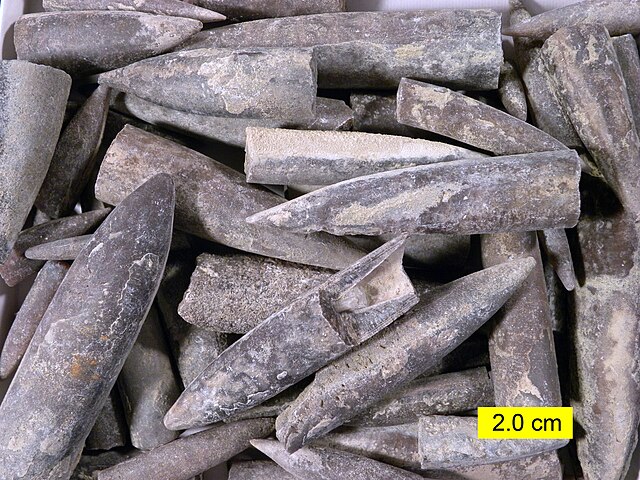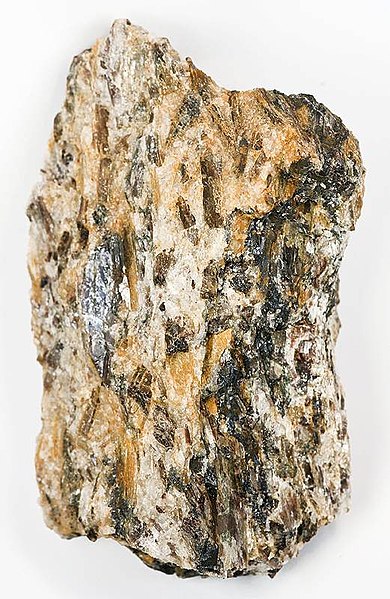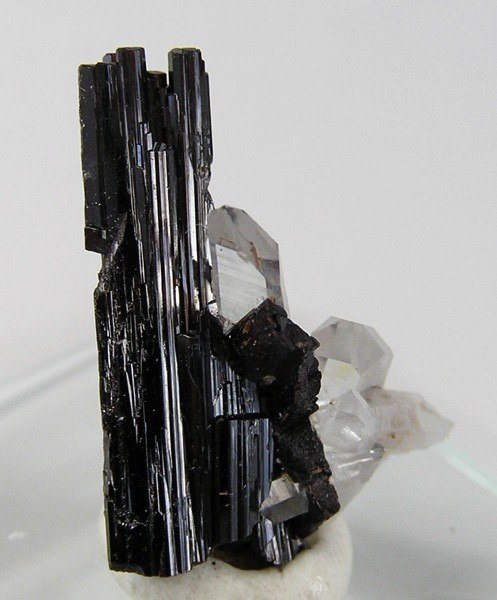Biomineralization, also written biomineralisation, is the process by which living organisms produce minerals, often resulting in hardened or stiffened mineralized tissues. It is an extremely widespread phenomenon: all six taxonomic kingdoms contain members that are able to form minerals, and over 60 different minerals have been identified in organisms. Examples include silicates in algae and diatoms, carbonates in invertebrates, and calcium phosphates and carbonates in vertebrates. These minerals often form structural features such as sea shells and the bone in mammals and birds.
Living Stromatolites in Exumas, Bahamas.
Fossil skeletal parts from extinct belemnite cephalopods of the Jurassic – these contain mineralized calcite and aragonite.
Many protists, like this coccolithophore, have protective mineralised shells
Forams from a beach
In geology and mineralogy, a mineral or mineral species is, broadly speaking, a solid substance with a fairly well-defined chemical composition and a specific crystal structure that occurs naturally in pure form.
Crystals of serandite, natrolite, analcime, and aegirine from Mont Saint-Hilaire, Quebec, Canada
Schist is a metamorphic rock characterized by an abundance of platy minerals. In this example, the rock has prominent sillimanite porphyroblasts as large as 3 cm (1.2 in).
Hübnerite, the manganese-rich end-member of the wolframite series, with minor quartz in the background
When minerals react, the products will sometimes assume the shape of the reagent; the product mineral is termed a pseudomorph of (or after) the reagent. Illustrated here is a pseudomorph of kaolinite after orthoclase. Here, the pseudomorph preserved the Carlsbad twinning common in orthoclase.








